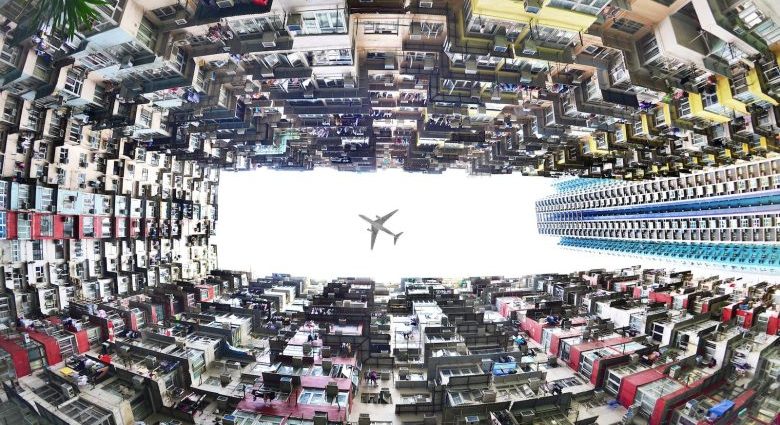When climate ministers from nearly 200 countries descend on the United Arab Emirates for a UN climate summit in late November, some hard conversations will need to be had on what has – and what hasn’t – been done to mitigate climate change on a global scale.
This year’s event is of particular importance. The 28th Conference of the Parties (COP28) faces a reckoning as it takes stock of progress toward the goals of the Paris Agreement, which set out to limit the average warming across the globe to “well below” 2 degrees Celsius and to pursue efforts to cap warming to 1.5 degrees.
On September 8, the United Nations Framework Convention on Climate Change (UNFCCC) released the Technical Document on Global Stocktake, a sort of check-in on what countries have done so far to prevent a more dangerous climate change. Two findings in this document stand out, and they will feed into the outcomes of the COP28 summit.
First, global emissions are not on track with the desired targets of the Paris Agreement. The UNFCCC’s 2022 Nationally Determined Contributions Synthesis report found that the global emissions are set to rise by 10.6% by 2030 compared with 2010, an improvement from the 2021 projections of 13.7% increase.
However, these efforts are not enough and implementation of current pledges by national governments put the world on track to become 2.5 degrees warmer by the end of the century. COP28 will have to reach a consensus for further reductions in emissions targets, especially by the developed world.
Poor access to funding
This brings us to the second key issue raised by the Global Stocktake. The shift to low-emission energy sources has been too slow. This lag is primarily because of a lack of technology and insufficient climate financing options, especially for developing and low-income nations. Poor countries face obstacles in generating local resources for climate initiatives. The absence of loans from the private sector poses a significant barrier.
The creditworthiness of a nation is generally gauged through macroeconomic parameters and past repayment histories. Unfortunately, many developing nations wrestle with issues related to low GDP, political instability and poor fiscal management, affecting their credit ratings adversely.
Even when loans are secured, they often come with exorbitantly high interest rates, further exacerbating their economic strain. The lack of adequate financing not only hampers their ability to implement crucial climate mitigation and adaptation strategies but also restricts their capacity to participate in global climate initiatives, perpetuating a cycle of environmental degradation and economic hardship.
Moreover, the scant finances often must be juggled between immediate socioeconomic concerns and long-term climate actions, presenting a complex conundrum for policymakers.
Developing countries need better access to institutionalized climate finance. The financial commitments essential for combating climate change are in disarray. The 2009 pledge to mobilize US$100 billion annually for developing nations by 2020 has not been achieved in any single year.
The Organization for Economic Cooperation and Development (OECD) estimates available funding for the year 2020 at a paltry $83.3 billion, a figure that underscores the systemic failure to honor even the most basic commitments. Further, more public funds flow from developed to developing nations for mitigation rather than adaptation.
However, there has been a rise in adaptation finance from multilateral development banks (MDBs), which include such institutions as the as the World Bank and the Islamic Development Bank.
The OECD’s “Towards Orderly Green Transition” report indicates that by 2030, an extra $1.8 trillion annually is required for climate action, representing a quadrupling (toward adaptation, resilience and mitigation) from 2019 levels, primarily for sustainable infrastructure.
That is where MDBs come in. They can substantively address the climate financing challenges faced by developing and low-income countries by amalgamating financial support, technical expertise and policy advice to bolster necessary reforms and resources.
Their capacity to work cohesively with both governments and the private sector facilitates a framework for investment, while their aptitude for providing low-cost, extended-maturity financing mitigates and efficiently shares risks, thereby enticing private investment.
However, the disbursements by MDBs have been lagging, and the current extent of resource transfer to developing countries is inadequate. Unlike many institutions that consistently seek to enhance their reach and efficiency, MDBs appear to have stagnated in their efforts.
In financial terms, MDBs’ gross disbursements are currently half what they were in 1990 relative to the GDP of borrowing countries. On the private-sector front, MDBs now mobilize just $0.60 in private capital for each dollar they lend. Thus MDBs need to reform.
An independent expert group commissioned under India’s G20 presidency has crafted a strategy for MDBs. Tasked with producing two reports, the initial “Triple Agenda” emphasizes the role of MDBs in merging development and climate goals, partnering with governments and businesses to mitigate risks, and becoming more adaptable.
MDBs should enhance their operations, considering disbursements and resources are now below 1990 ratios. The group suggests a tripartite strategy: MDBs should focus on eradicating poverty, boosting shared wealth and aiding global issues like climate change.
There’s also a call to triple sustainable lending by 2030 and introduce a novel funding approach (apart from negotiated equity contributions from sovereign shareholders and discretionary trust funds) to foster versatile collaborations with investors aligned with the MDB agenda.
COP28 needs to advance this issue. Without climate finance for developing countries, Paris Agreement goals won’t be met. The UAE will have a crucial role to take this agenda forward.
This article was provided by Syndication Bureau, which holds copyright.

